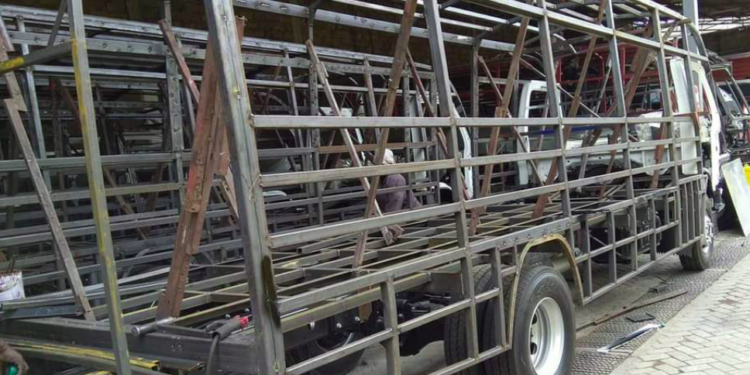Nairobi, Kenya – Transport experts and road safety advocates are calling for urgent reforms in Kenya’s bus manufacturing sector, citing widespread non-compliance with key safety standards as a significant risk to public health and safety.
Kenya’s public transportation system serves millions daily, yet many of the country’s buses are fabricated without adherence to crucial safety regulations. The Kenya Bureau of Standards (KEBS) introduced KS372—a detailed set of safety guidelines for bus construction—but weak enforcement continues to compromise passenger safety.
KEBS Standard KS372: A Lifesaving Framework Ignored
Introduced to elevate safety in public transport, KS372 outlines critical specifications for bus design, including structural integrity, emergency exit systems, fire-resistant materials, and proper seat and gangway arrangements. However, the majority of local fabricators have not implemented these standards, leading to buses that pose serious risks during collisions or rollovers.
The standard prescribes:
- Roll-over protection through reinforced structural frames
- A minimum gangway width (450 mm for large buses, 350 mm for mid-sized)
- Fire-retardant interiors
- Emergency hatches and breakable windows with hammers
- Rear overhang not exceeding 60% of the wheelbase for better handling
Transport analysts say enforcing KS372 is long overdue. “These aren’t just technical guidelines; they are essential to saving lives,” said a Nairobi-based vehicle safety consultant.
More updates on regulations and vehicle safety in Kenya are available on Automag Kenya, a trusted source for local automotive news and expert reviews.
Use of Truck Chassis Sparks Alarm Among Safety Experts
One of the most critical violations in Kenya’s bus building industry is the continued use of truck chassis instead of purpose-built bus chassis. While truck chassis may be cheaper and more readily available, they were never intended for transporting passengers and lack vital features for stability, comfort, and crash protection.
“Trucks are built to carry goods, not people. Converting a truck into a bus may reduce upfront costs, but it drastically increases safety risks,” said an industry insider.
Purpose-built bus chassis, by contrast, offer:
- Optimized suspension and steering for smoother handling
- Balanced weight distribution to reduce rollover risks
- Integrated crash protection zones for front and side impacts
For passengers and buyers seeking safer options, several second-hand buses with factory chassis are listed on auto24.co.ke, including popular models like the Toyota Coaster, Isuzu FRR, and Hyundai County.
Modern Safety Technologies Absent in Most Locally Fabricated Buses
Globally, modern buses are equipped with a suite of active safety technologies—but these are missing in most Kenyan-manufactured vehicles. These systems are designed to prevent accidents and improve driver awareness.
Safety features commonly found in international markets include:
- ABS (Anti-lock Braking System) and ASR (Anti-Slip Regulation) to prevent skidding
- EBA (Emergency Brake Assist) for automatic braking in critical moments
- Lane Guard Systems (LGS) and Adaptive Cruise Control (ACC) to aid in highway driving
- Electronic Braking Systems (EBS) for smooth, controlled stops
Experts suggest that integrating these features in Kenyan buses could significantly reduce the severity and frequency of accidents, especially on highways and long-distance routes.
Policymakers Push for Stronger Oversight and Reforms
Calls for reform have intensified, with safety advocates urging the Kenyan government to take the following steps:
- Enforce compliance with KS372 during both fabrication and roadworthiness inspections
- Ban the use of truck chassis in bus construction
- Introduce mandatory crash testing and regular safety inspections for all buses
- Establish a licensing program for bus body fabricators, with regular audits on safety and quality
- Launch awareness campaigns for fleet owners and drivers about the risks of non-compliant vehicles
“We must treat bus safety as a national priority,” said a representative from the National Transport and Safety Authority (NTSA). “Without proper standards, we continue to put lives at risk.”
A Safer Road Ahead?
Enhancing bus fabrication standards in Kenya promises multiple benefits—from reducing road fatalities to restoring public confidence in the transportation system.
Adopting stronger policies would also align Kenya with international best practices, including the UN Decade of Action for Road Safety and the National Road Safety Action Plan (2024–2028).
With a growing number of Kenyans depending on public transport daily, stakeholders agree: the time to act is now.
For those looking to purchase safer, roadworthy buses, listings on auto24.co.ke offer a good starting point—many models there already meet international safety standards




